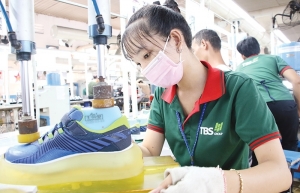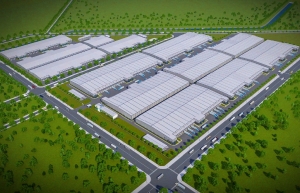Vietnam’s FDI attraction needs a new approach
 |
| Nguyen Mai, chairman of the Vietnam Association of Foreign-Invested Enterprises |
International media outlets have recently pointed out that compared to other Southeast Asian countries, Vietnam has more advantages in foreign investment attraction. Recent surveys on US and European businesses also showed that doing business in Vietnam is now more stable and less risky.
In this new period of development with the great impacts of Industry 4.0 and digital transformation, attracting foreign investment inflows in a more efficient manner becomes more important, while the country’s foreign direct investment (FDI) should focus more on quality than quantity.
Vietnam now has about 800,000 domestic businesses. They are more powerful than in previous years and can do many more to contribute to economic development. Therefore, the country should give more opportunities for them to do so.
The facts show that in the first four months of 2021, except for power projects, specifically gas-to-power ones, the majority of newly-registered FDI ventures were small ones. In cities, including Hanoi and Ho Chi Minh City, the number of major technology projects like smart cities remains modest.
To increase the quality of FDI, a new approach should be taken that focuses on the development level of cities and provinces, the change in incentive policies, and the development of specific norms to assess the influence of FDI on socioeconomic development.
In terms of the development level, three levels should be taken into account. First, for the cities and provinces which attract the most FDI and have strong economic development like Hanoi, Ho Chi Minh City, Haiphong, Quang Ninh, Vinh Phuc, Danang, Quang Nam, Binh Duong, Dong Nai, and Ba Ria-Vung Tau, where the industrial and service sectors make up the majority of economic development, they should change their direction on FDI attraction towards saying no to low-level and labour-intensive projects.
In these provinces, powerful domestic groups and small- and medium-sized businesses are doing well, even with modern technology and service sectors. These localities should follow Resolution No.50-NQ-TW, giving directions to complete the legal framework on FDI attraction by 2030, focusing on only such investment serving modern economic development.
Secondly, for the northern mountainous areas Lai Chau, Dien Bien, Cao Bang, Ha Giang and others, the problem is how to attract FDI because of underdeveloped transport infrastructure and weak communications. To increase their attraction, these issues should be solved.
The facts show that the development gap between the developed localities and those in mountainous areas are widening. Recently, the government decided to invest in developing expressways for mountainous provinces, making it an important strategy. It is expected that we will have the expressway network linking Ha Giang, Cao Bang, Dien Bien, and Lai Chau in the coming years, thus shortening travelling time. At that time, they will be able to lure foreign-invested enterprises as they have advantages of cheaper labour cost, and abundant land funds.
To develop transport infrastructure for mountainous provinces, the state should spend a specific amount of money, together with private investment to carry out such projects.
Thirdly, for cities and provinces in the middle of the rankings in FDI attraction like Hung Yen, Nam Dinh, Nghe An, Quang Binh, Quang Tri and others, priority should be given to FDI which has lower-level quality than those in the localities of the first group.
Regarding the existing incentive policy, it should be specifically changed for cities and provinces towards giving no incentives to FDI in labour-intensive sectors like footwear, textiles, and garments in developed cities like Hanoi, Ho Chi Minh City, Binh Duong, even those ensuring environment protection. The incentives should be given to ventures in localities in the middle ranking, including those on tax, land, and favourable access to labour and market access among others.
As shown in Resolution 50, the orientation in the investment incentive policies for FDI is worked out, focusing on output quality and contributions to the domestic sectors. These include the value chain, added value, and application and transfer of high-technology, as well as research and development and innovation, rather than the previous focus on location, sectors, and investment scale. Therefore, the existing ones should be changed towards this.
Also importantly, Vietnam should also have more specific and concrete criteria on measuring efficiency of FDI attraction. The most important thing now to state management is not to make common assessments on FDI quality, environment protection, and sustainable development. They instead should pay attention to studying and then setting out specific norms for quality assessment.
For instance, at an industrial park to license a foreign-invested project, the criterion and norms must be set out on how many dollars minimum are required per cleared hectare of land, and how much contribution to the state budget is required.
COVID-19 is not affecting Vietnam’s FDI attraction as considerably as other countries, but to increase its attraction the country should soon solve the aforementioned issues.
Vietnam has important orientations and strategies on FDI attraction in the form of Resolution 50, along with Resolution No.58/NQ-CP on the action plan to implement Resolution 50. The key now is how to implement this in an efficient and successful manner.
What the stars mean:
★ Poor ★ ★ Promising ★★★ Good ★★★★ Very good ★★★★★ Exceptional
 Tag:
Tag:
Related Contents
Latest News
More News
- Harnessing further FDI to Vietnam (May 02, 2020 | 08:00)
- Three decades of investment attraction victories in Vietnam (May 01, 2020 | 09:00)
- Decoding the book “FDI: Double-sided coin” (February 20, 2019 | 08:29)
- FDI in Vietnam according to pundits (October 11, 2018 | 11:00)
- Taking advantage of the new era (October 10, 2018 | 15:53)
- Interest in renewables drives foreign investment surge (October 10, 2018 | 15:21)
- Bac Giang: building firm FDI foundations of industry and tourism (October 10, 2018 | 13:09)
- Vietnam’s way ahead in foreign investment and economic growth (October 10, 2018 | 11:17)
- FDI into real estate through the roof in Ho Chi Minh City (October 08, 2018 | 12:37)
- Directing FDI into large transport infrastructure projects (October 08, 2018 | 12:34)

























 Mobile Version
Mobile Version